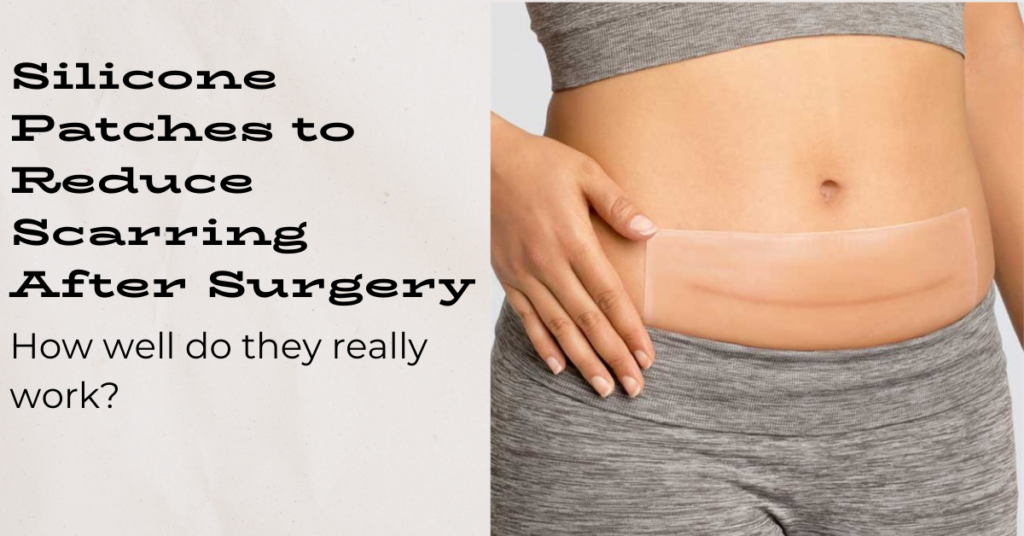Depending on the kind of surgery you have, scars can be anywhere from minimal to pretty thick and noticeable. Although it’s good to keep in mind that some scars take one to two years to fully heal, there’s quite a lot you can do to speed up the process. It’s been proven time and time again that silicone scar strips are both a very effective and non-invasive treatment for scars of all kinds.
How silicone works
When there’s a wound of some kind- whether from a surgery or other injury- skin cells known as fibroblasts to make collagen to repair the damage. Fibroblasts may not form collagen in an organized way like the rest of the skin, or it may produce too much. This results in either a hypertrophic or a keloid scar.
Silicone works as a protective layer that traps in the skin’s moisture which is key to the healing process. By locking in moisture, dry cracks won’t form and bacteria won’t enter to further inflame the scar. Silicone is porous, so it’s easy for oxygen to come through and provide an ideal healing environment. Whether you buy it as a gel, stick, or silicone scar strips, it is sure to provide some results within 8-12 weeks.
Although it’s a synthetic substance, dermatologists have realized that topical silicone is totally safe, can be worn under your makeup, (it might be in your makeup primer), is hypoallergenic, and won’t block your pores. How great is that?
Amoena Patches: The Gold Standard for Silicone Treatments
Amoena’s silicone is ideal since it completely adheres to your skin and can be reused for up to 12 weeks. Ideally, you want to keep your patch on for at least 12 hours every day for the full duration of its use.
They come in different shapes too; these are the ones we carry in-store: silicone strips, square patches, circle patches, and “anchor” shaped patches. The latter two are great for women who’ve undergone breast cancer surgery. They could be especially helpful in treating scars any from these procedures:
- Partial or full mastectomy
- Nipple-sparring mastectomy
- Skin-sparring mastectomy
- Modified radical mastectomy
- Breast reconstruction
Keep in mind that the different types of incisions from these surgeries can all look and heal differently, and your own natural healing capacity influences how long redness and irritation will stay.
Proper storage of silicone is a pretty important part of making sure the patch stays in good condition for those 12 weeks. Amoena’s silicone scar strips should be washed with a gentle soap and warm water every day, dried by rolling it up until it’s adhesive again, and protected with a polyurethane film. Full instructions can be found here.
These patches are absolutely worth it if you want to prevent scarring in the early stages or treat an old scar. The key is be consistent, remove carefully and always moisture your skin afterwards!
Other tips to help reduce the appearance of scars
While silicone can be a major part of the slow disappearance of a scar, there are plenty of other factors involved that can improve your skin. These are all things you can do that are relatively easy and low-cost:
- Avoid exposing the scar to the sun
- Use sunscreen if exposed to the sun
- Follow post-op instructions very carefully (Compression is necessary after surgery; find out why and the items we have in stock)
- Control your blood sugar if you have diabetes
- Massage your scar
- Take a zinc supplement or eat foods rich in zinc. This mineral has been shown to reduce inflammation and facilitate good collagen production.
- Over-the-counter corticosteroid cream
- Avoid smoking
As always, you should speak to your doctor regarding any kind of supplements that you want to try. It is possible to take too much zinc or any other vitamins and minerals that help with skin healing.
Also speak to a professional about silicone scar strips- they may explain to you that though they may be effective, your genetics and other factors can affect the overall results. Still, it’s an excellent option for those who don’t want to undergo expensive treatments and other surgeries for scar removal.
